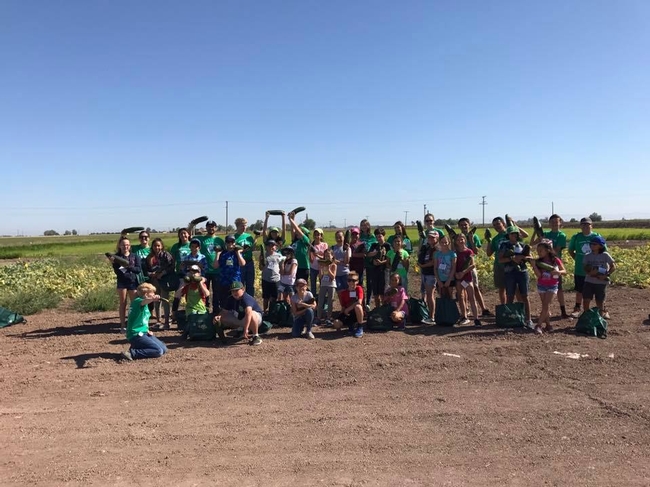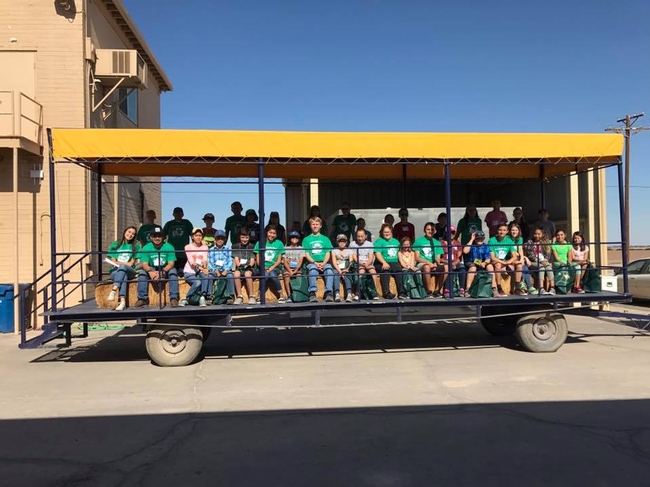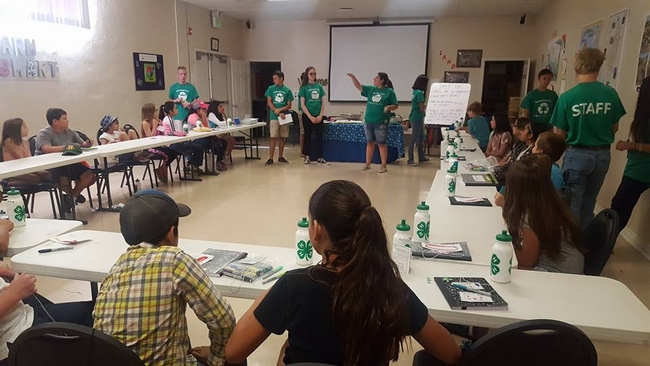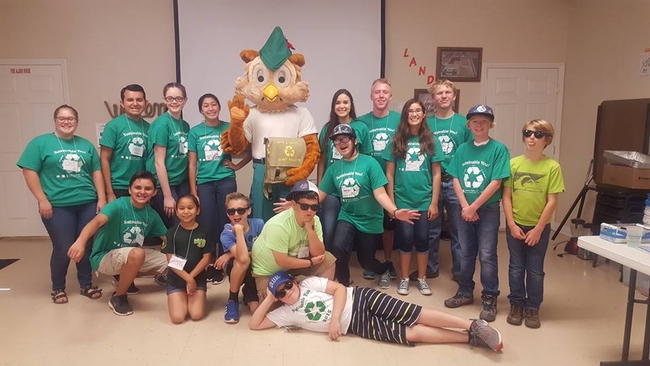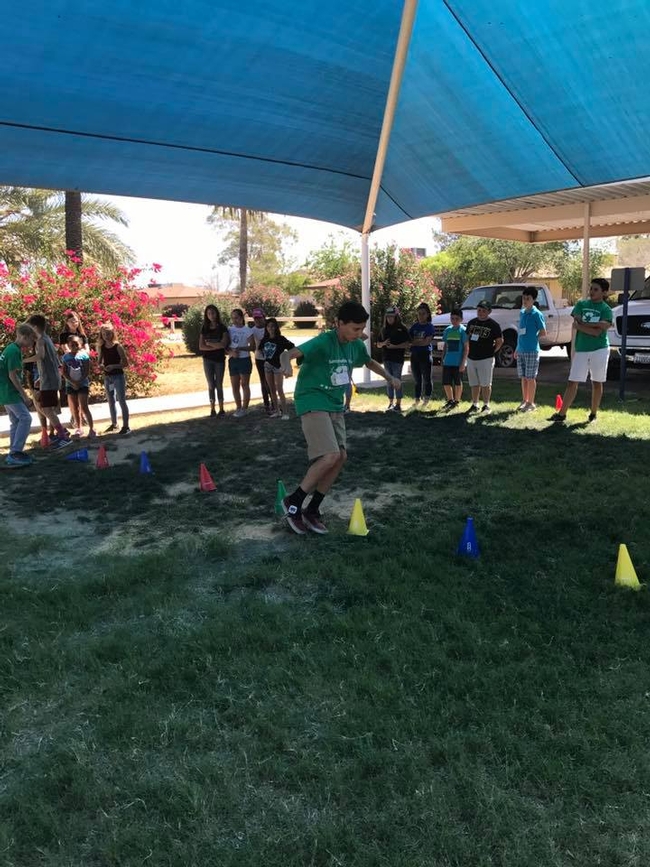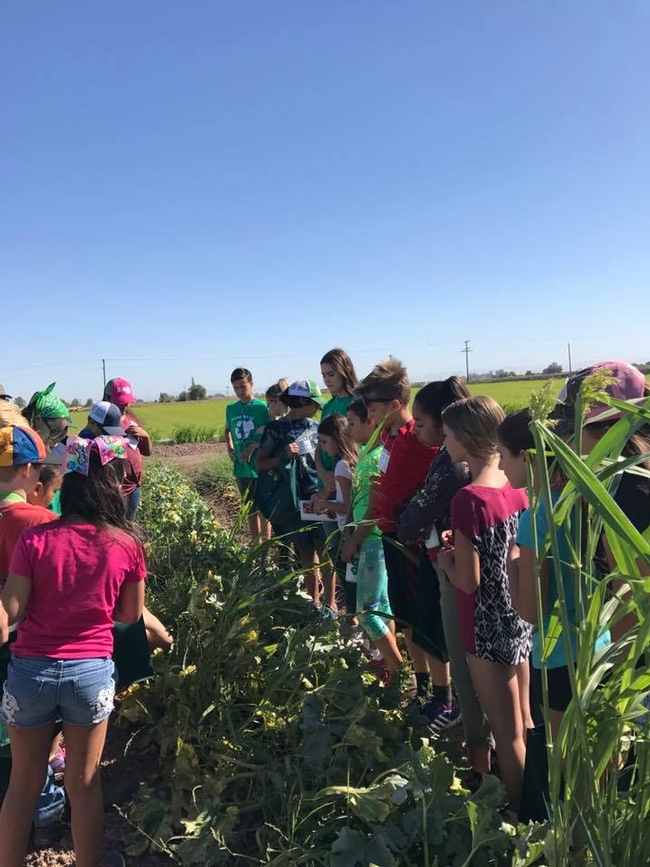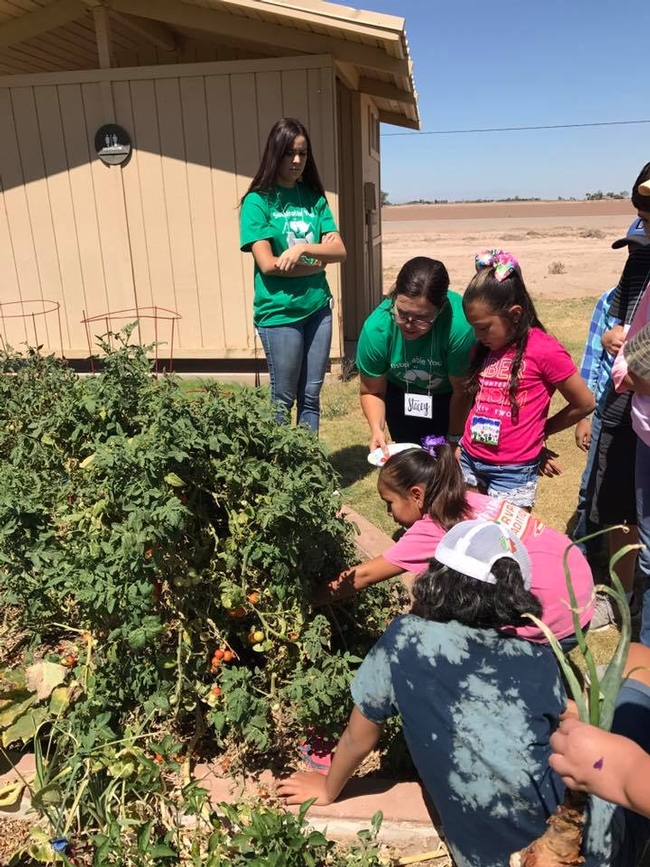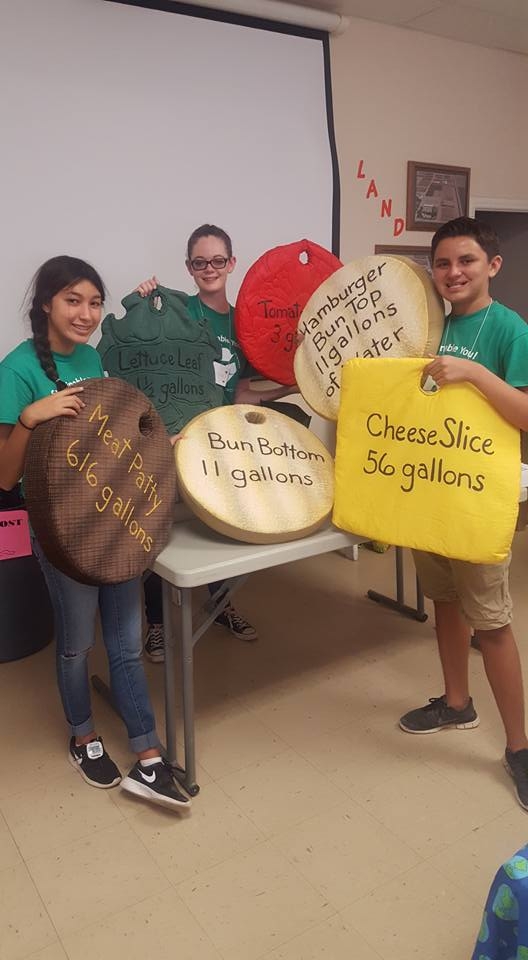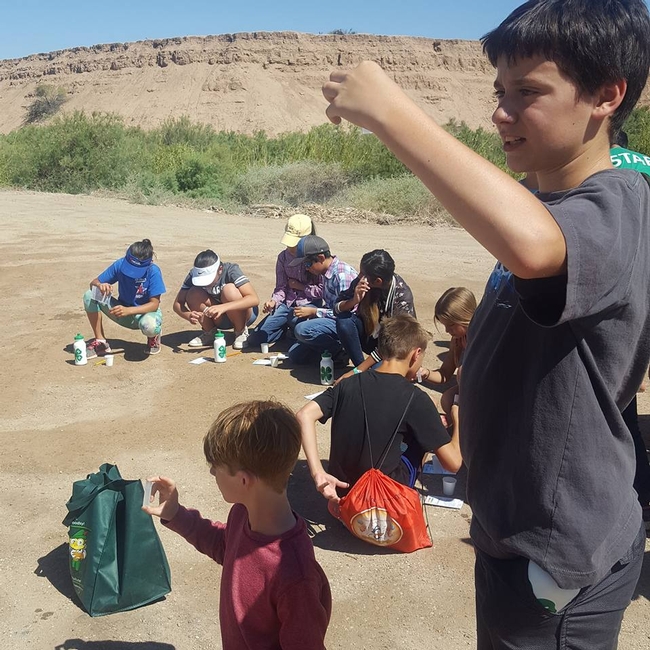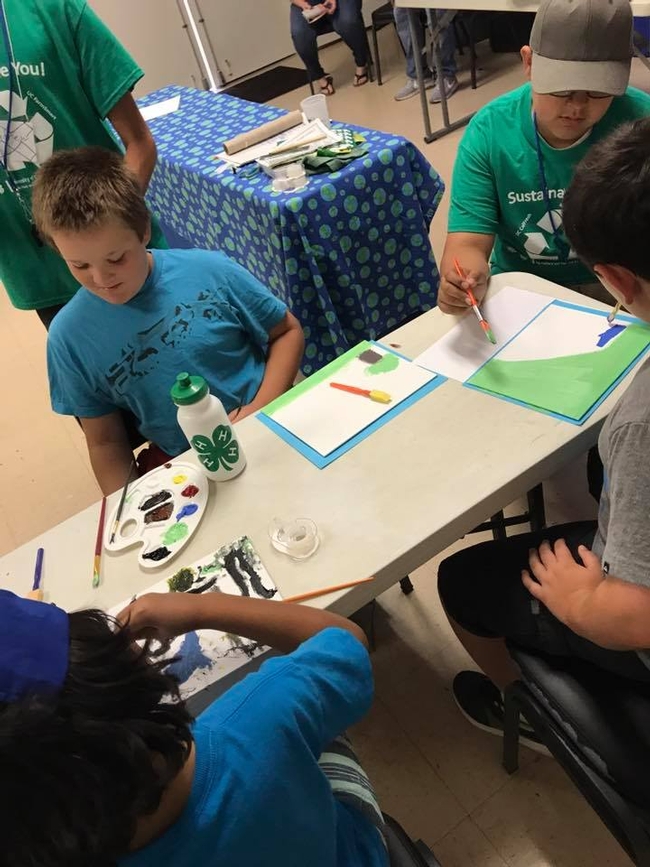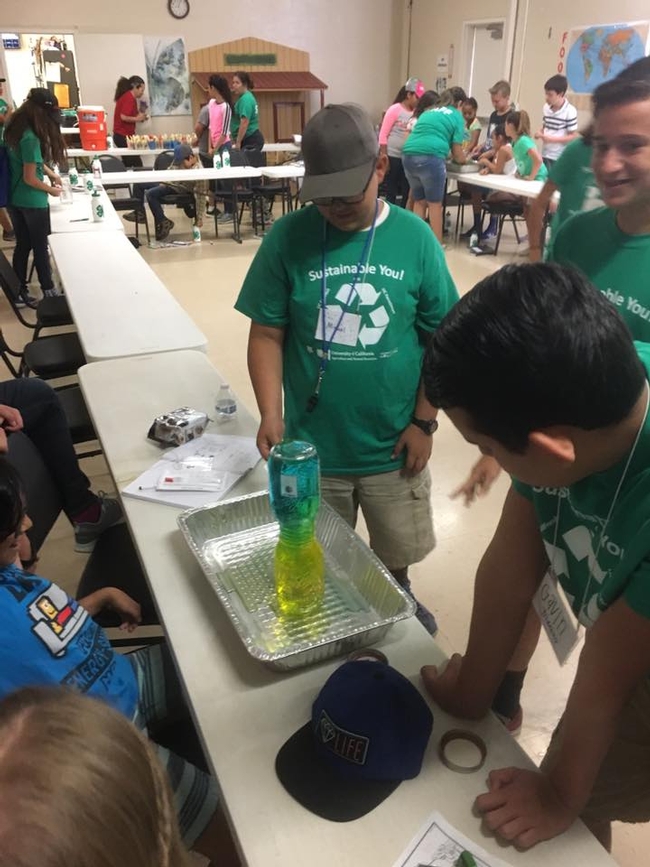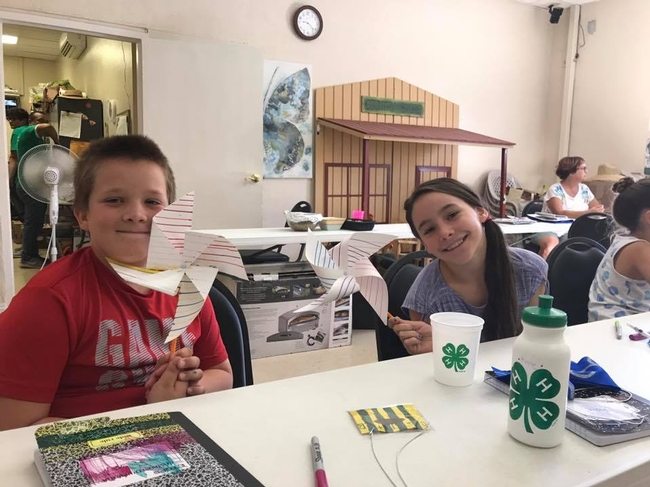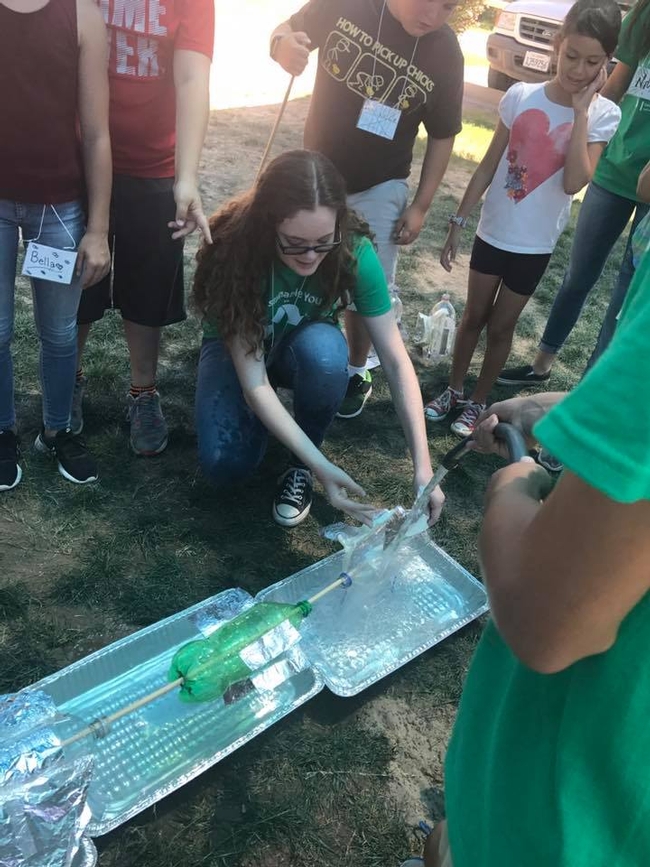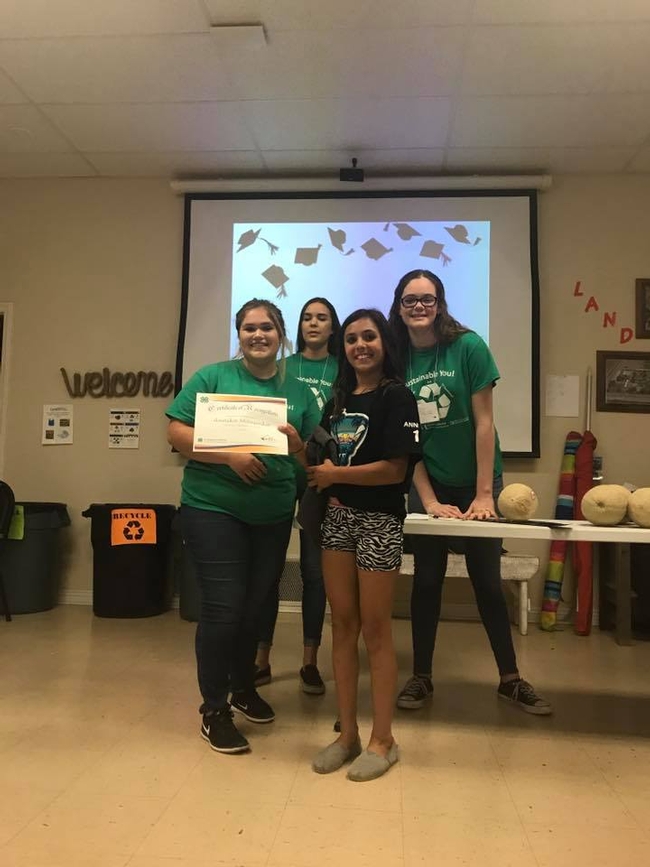Imperial Valley youth aged 9-12 assembled at the UC Desert Research and Extension Center once again for the third annual Sustainable You! camp. Sustainable You! is a youth-led education enrichment camp that is planned and delivered by senior 4-H members. With this being its third year, the camp staff worked to plan activities that differed from those of previous years. The 27 campers learned about land, food, water, air, and energy over the course of the week with different youth-led hands-on activities tied to each theme. With the generous support of the Vesper society and partnership of FARM SMART with UC CalFresh and 4-H, campers were able to experience quality learning about sustainability and healthy communities.
Day one of the camp focused on land. The kids learned about trash and where it goes when thrown “away”. They learned that “away” is actually to a landfill where human waste piles up by the ton. They were presented with questions on how waste can be minimized. Staff members taught the kids about different types of waste and what can be reused and recycled and what cannot. They also learned how to reduce the amount of waste that they produce. They were taught about materials that can neither be reused or recycled but could be kept out of landfills by being composted. They were presented with three bins labeled “recycle”, “landfill” and “compost” so that they could separate their waste into the proper bin each day. Their major project for the day was to make new paper from used paper. A mixture of blended, used paper and water was given to the kids so that they could color it, flatten it out, and allow it to dry. They were able to take their paper home once it fully dried.
The second day of the camp focused on the theme of food. The youth learned about where food comes from and how far it travels. They played a game which required them to act as each ingredient that is in a chocolate bar. Stations were set up as countries and the task was to travel from the country in which the ingredient is produced and then back to the U.S. The kids enjoyed this activity because it involved running between different stations, but they also realized how much energy is used to transport food through how much of their own energy was spent during the activity. They learned about the importance of locally grown food. The kids were able to harvest their own zucchinis. Many of the kids went home to bake zucchini bread with their parents and brought it in the next day!
The third day revolved around water. This was also field trip day! We loaded up a bus and traveled to the New River Wetlands. Their first activity was a scavenger hunt which allowed them to become familiar with the wetlands. The game took them on a search for various types of animals and plants. They were able to witness the state of the water when it enters the wetlands vs. when it leaves. The counselors later broke the kids up into groups and facilitated water quality testing in each group. The kids were excited to read the results and compared them with other groups. They tested water at both the beginning point of the wetlands and the end and when comparing their results, many kids were surprised to see a change in water quality.
The next day was Air Day. Not only did they learn about air pollution and what actions can be taken to minimize it, but they got to paint a picture of what they imagine a city with no air pollution would look like. The art of each student showed their understanding of what pollutes the air and what cleans it. All 26 paintings were beautiful, colorful displays of a city filled with trees, animals, and people.
Our final day was a day that challenged the campers to utilize their engineering skills. Within a small group, they put their brains to work to assemble a hydroelectric turbine. They had to do this using only paper, tape, and foil around a 2-litre bottle. Their challenge was to produce a model that would spin faster than their peer's projects when water was applied to the turbine. Each turbine was unique and the youth discovered that each design delivered a different amount of kinetic energy. This activity taught them that renewable energy can be used rather than non-renewable energy sources. Through this, we can conserve our non-renewable sources of energy.
Each day the kids were presented with journal questions that focused on the topic of the day. They answered these questions at both the beginning each morning and again in the afternoon, before leaving. The changes in their answers showed what they learned throughout the day. Their growth over the course of the week was rewarded on the last day as they walked through a graduation ceremony and received a certificate for completing the camp.
Natalie Gonzalez
